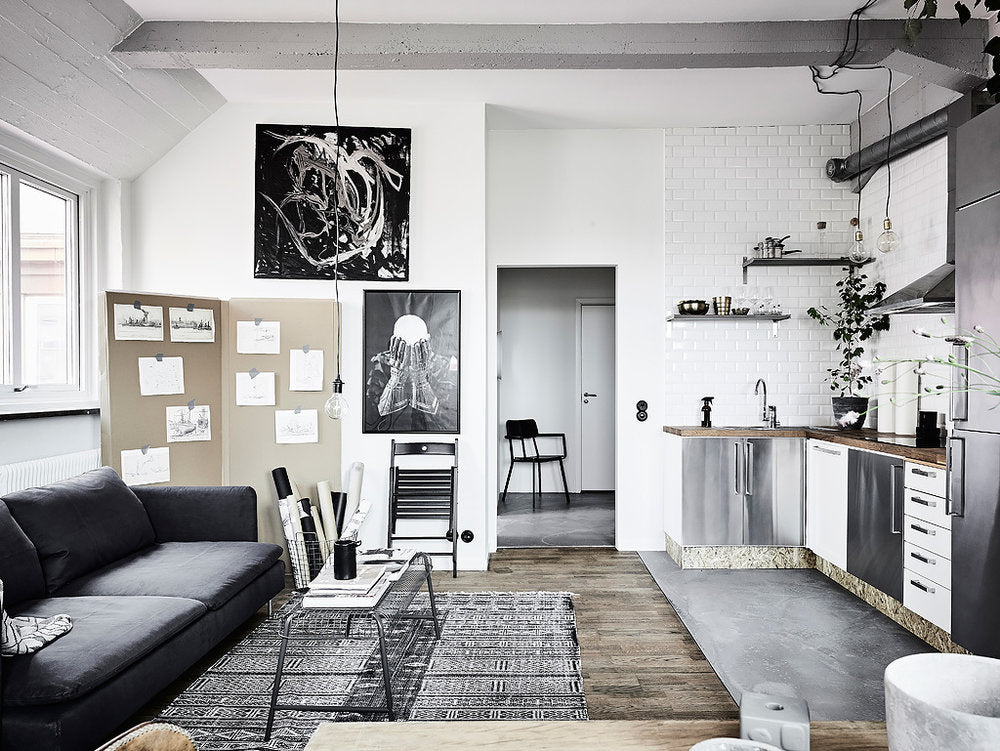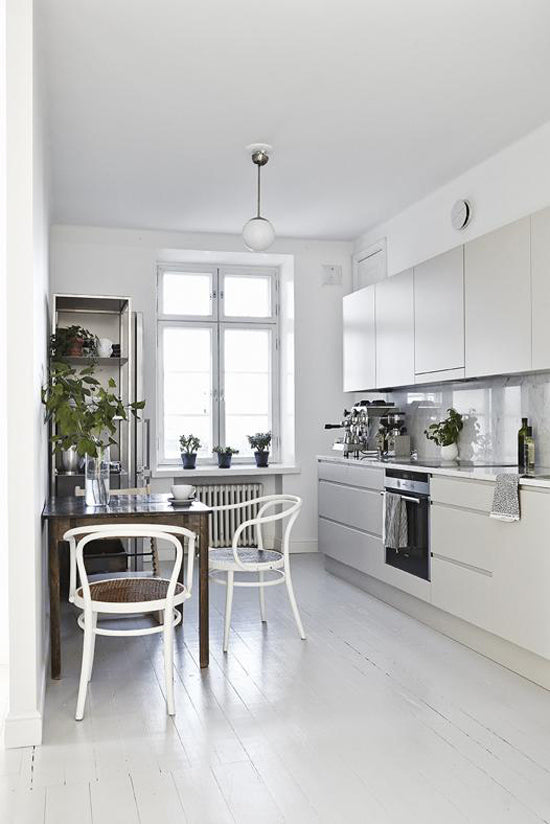Recent Post
Archive
- May 2016

47 Ideas From Interior Stylists To Bring Scandinavian Design To Your Home
Jun 22, 2017
Photo @ Pia Ulin
Timeless, humanistic and captivating, the Nordic way of design with it’s identity stemming from nature.
It’s functionality and modernistic appeal.

Design @ Anna Furbacken
A design that’s refined and accessible for any home.
See exactly how you can bring the Scandi look to your living space in detail.
What textures to choose from, what colors you should go with or how you could utilize space; with the ideas and examples from the Scandinavian designers themselves.
Scandinavian Design
History and Philosophy
Scandinavian design traditionally began in 1897 at the Stockholm Exhibition of Arts and Industries. One of the earliest pioneers of the design was the Finnish architect and designer, Alvar Aalto. His earlier work was based around Nordic Classicism and Functionalism.
The Stockholm exhibition in 1930 is regarded as one of the catalysts for the breakthrough of functionalism. Alvars’ style in this era became more about organic forms, natural materials and modernism.
Sweden and Denmark were said to be the most productive in the field of design earlier, but Norway did join the movement later on with works of very fine quality: glass, ceramics, china, furniture, textiles, lamps and silver work.
Interior at the Stockholm Exhibition, 1930. Photographer: Erik Holmén. Source reference: Nordiska museet, NMA. 0031302
After the 1930’s the design became more humanistic. Attempting to meet the needs of the person and with a close connection to nature.
The exhibition tour “Design in Scandinavia” contributed heavily to the popularity throughout the United States, Canada and Europe in the 1950’s. As well as the Nordic “Lunning” prize furthering development.
Alvar Aalto exhibition department store Nordiska Kompaniet NK Stockholm, Sweden, 1954.
After WW2 people’s views in Western Europe leaned towards the democratic, and with that came the idealogy that the items should be accessible and affordable for everyone, not just the wealthy.
In the post-war period existed a scarcity in building materials. So they needed lower-cost materials that could be mass produced. Aluminium, steel, plastic and wood came to the forefront.
Arne Jacobsen’s Swan Sofa and chair, SAS Royal Hotel, 1958.
From thereon various styles and trends emerged, such as the perceived lack of personality of mass production and the subsequent handcraftsmanship, or the futuristic shapes, “Op Art” and vibrant colors of Verner Panton.
Verpan mirror sculptures, Verner Panton. www.verpan.com
Today institutions exist in each of the five Nordic countries, keeping Scandinavian design alive and inline with it’s original concepts.
Each country and stylist have their own influences and take on design, see examples below in detail from today’s Scandinavian designers on what makes their style unique.
Want to dig in to it’s history further? check out these resources:
The Story Of Scandinavian Design: Combining Function and Aesthetics
What it’s defined by?
Design @ Anna Furbacken
Inspired by nature, the Nordic climate and way of living. The long cold winters and short supply of daylight required brighter walls and floors, warmer textiles, and less clutter for maximum flow of light.
Get the look
It focuses on functional items in the interior.
Design @ Lene Ronfeldt
Clean lines and simplified designs that have a direct applicable use like furniture, lighting, textiles, dishes, silverware and cooking utensils.
One of the goals was also to enjoy the domestic environment and make it as comfortable as possible.
Design @ Annaleena
The style aimed to make designs affordable with easily accessible natural materials made to last.
Get the look
Ideas From The Scandinavian Designers
Living Room
Design @ Anna Furbacken
Using black furniture and artwork here creates the clean, highly contrasting lines that makes each piece stand out from the rest of the room.
Lighter grays and browns featuring in between for a detailed and layered effect.
Design @ Anna Furbacken
Try an eclectic style, adding a dark stained vintage sofa here also adds some masculinity and boldness to a largely white base.
If you have a lot of artwork or pictures, group them on the wall, collage style. Using vertical lines here to hang them. Looks sleek and tidy.
Get the look
Design @ Anna Furbacken
Spice up the room with deep orange color combinations for accessories. It doesn’t have to be monochrome everywhere.
Design @ Annaleena
The Swedish interior stylist, Annaleena, here opts for fewer details; no complex patterns or clutter but plenty of coziness added from the sofa and it’s accessories.
Design @ Riikka Siusluoto
Mirrors situated near windows for extra light distribution in a room.
Light browns for an earthy vibe and cooler tones throughout create a calmer feel.
Design @ Lene Ronfeldt
Personality is a large part in what a designer will consider when choosing colors. Darker tones being considered more masculine, and purple hues can express a sense of spirituality or humanity.
Design @ Lene Ronfeldt
Curtains are rarely seen in Nordic homes. Keep window coverings light and fitting if needed. Blinds are great as you can keep privacy when necessary and maximize light by raising it.
Design @ Joanna Laajisto
Going with bright white walls as a base is a common theme, it will reflect light and make your space appear bigger than it is.
Design @ Elisabeth Heier
Instill peace and purify the mind by bringing in the deep blue of the oceans’ depths.
Design @ Elisabeth Heier
For the Norwegian interior designer Elisabeth Heier, the grey beige colored wall here is preferred due to it’s unique expression of color throughout the day in different lights.
Dining Room
Design @ Anna Furbacken
Swap out large and lumbering chairs and tables, choose furniture that’s leggy and just enough to function as needed. steel, or wood like teak or birch can be good replacements. With teak specifically being extremely popular in the past with Danish furniture designers such as Finn Juhl.
Design @ Anna Furbacken
Grouping plants and ceramics in one window can save space and livens the room up with some color. It’ll also make watering easier.
Design @ Anna Furbacken
The Swedish interior designer, Anna Furbacken, chooses to inject some French inspired curlier designs, with the chairs and mirror and washed out wooden floor. The deep blue rug adding some texture and a visual separation of the two spaces.
Design @ Annaleena
Design @ Elisabeth Heier
Less is more. For a minimalist style, keep open spaces, simple designs and include only items that have a purpose or function in the room.
Aim to reduce clutter and increase function without sacrificing beauty.
Design @ Joanna Laajisto
Build layers of comfort with textured accessories to create a cozier dining experience.
Get the look
Design @ Riikka Siusluoto
Kitchen
Design @ Anna Furbacken
Design @ Annaleena
Design @ Elisabeth Heier
Kitchen counter tops typically are streamlined and white, although wood and metal bases are good choices too.
Keep it clutter-free with a few utensils, bowls, cutting boards and a plant or two.
Design @ Lene Ronfeldt
Patterned floor and rug bring extra intrigue to this kitchen, with wood and plants throughout, and efficiency of storage in cabinets and wall mounted shelves.
Open shelves are practical and useful for regularly used items allowing easier access.
A beautiful step away from the typical all-white look, with the lighter wood tones contrasting the darker ship grey theme.
Design @ Joanna Laajisto
Bedroom
Design @ Anna Furbacken
Design @ Anna Furbacken
Add warmth and interest to a section of the bedroom with corner lighting. Gold or copper adds an artistic look that refracts light.
Design @ Anna Furbacken
Splashes of blue can be a popular way of introducing some color. Representing the sea which is important in Scandinavia with it’s extensive seafaring history.
Get the look
Design @ Anna Furbacken
Design @ Annaleena
The cold harsh winters in Scandinavia make it paramount to keep yourself warm, especially at night.
You may not have the same need to a degree, but the function of the bed is to be as comfortable as possible and aid sleep. This is where you want to incorporate layers of textiles; cotton, wool, linens, throws etc.
Get the look
Design @ Joanna Laajisto
Design @ Lene Ronfeldt
Design @Riikka Siusluoto
Go for light and white beige-y tones for an airy relaxing feel to a bedroom.
Office
Design @ Anna Furbacken
Bring the outside in with not only plants but animal print artwork or similar nature inspired motifs.
Design @ Lene Ronfeldt
The importance of workplaces being clutter-free are two-fold, one for the design and for productivity. One way is to keep less used items higher up and out of the way on shelves.
Hallway
Design @ Anna Furbacken
Utilize the space you have with clever organization, try to keep unused items behind closed doors.
Design @ Anna Furbacken
Design @ Elisabeth Heier
Break up the monotony and establish some intrigue with patterns or textures on the floor and artwork in hallways.
Photo @ Pia Ulin
Bathroom
Design @ Joanna Laajisto
Photo @ Pia Ulin
Add a decorators ladder if you don’t have an existing towel rack. In this way it is more practical, it can be moved, and fit in smaller spaces.



























































